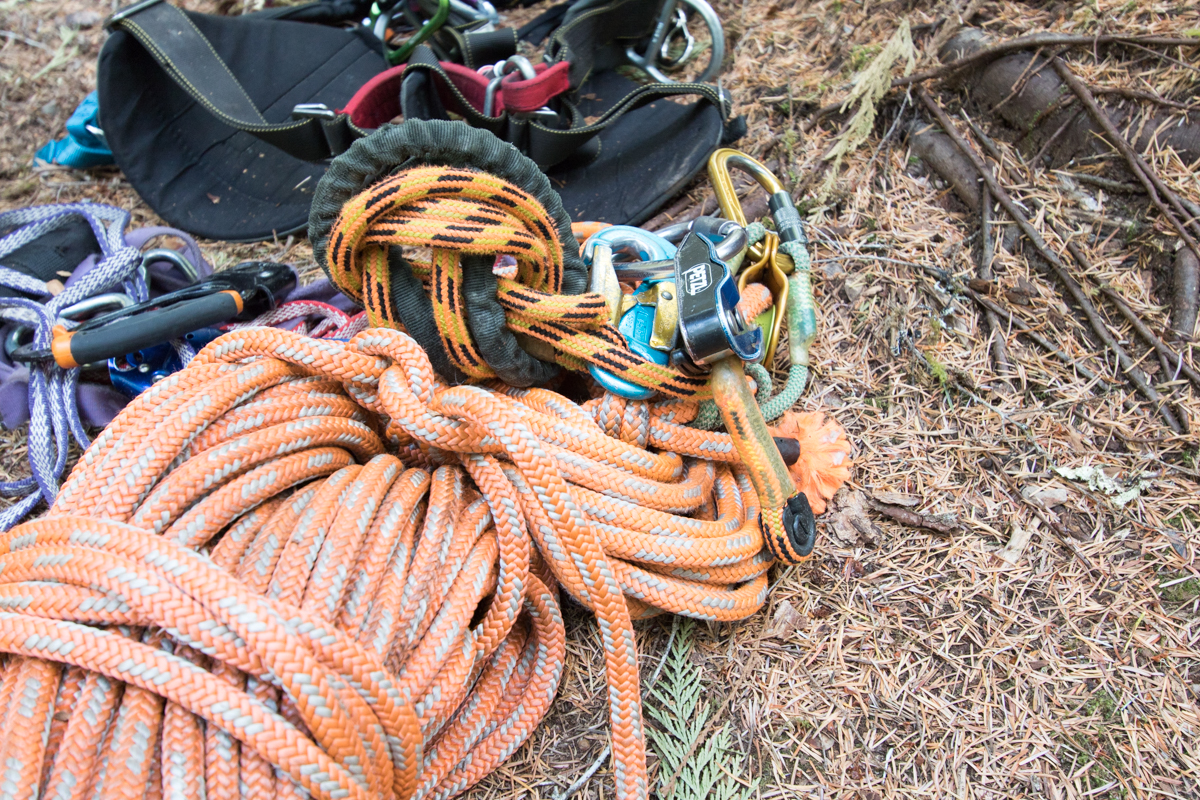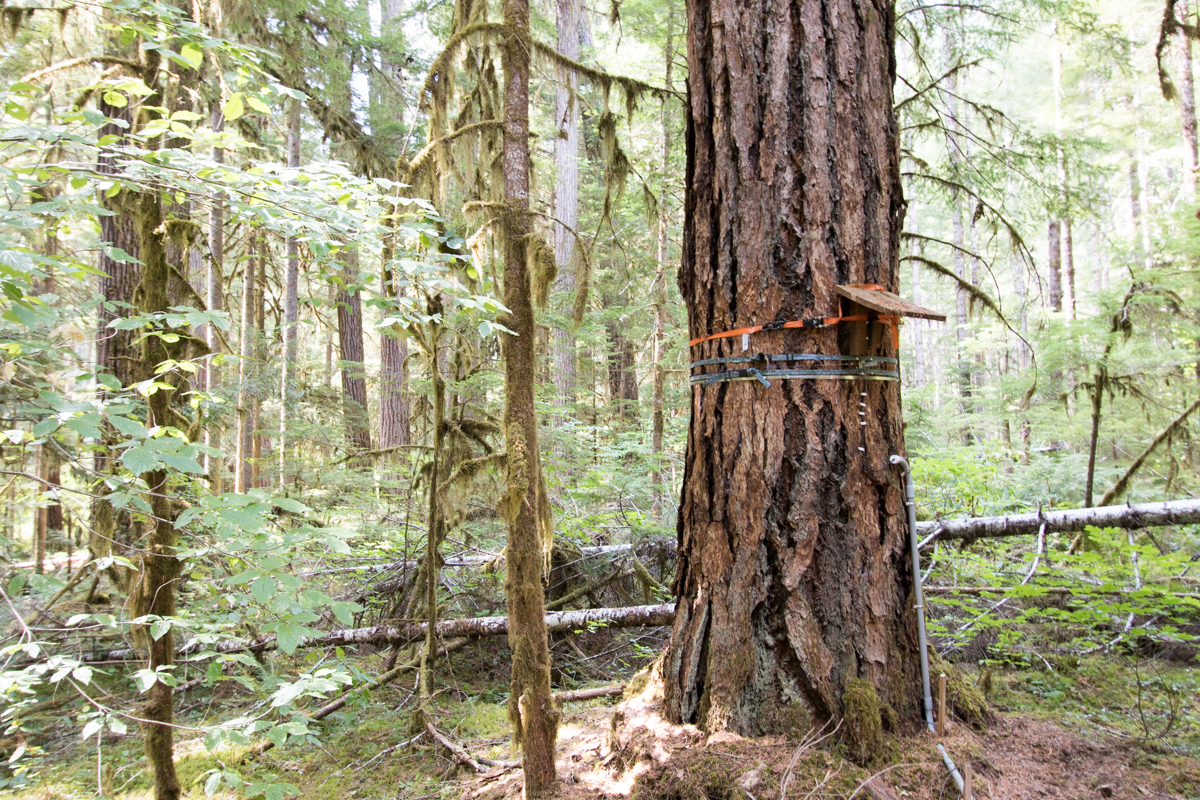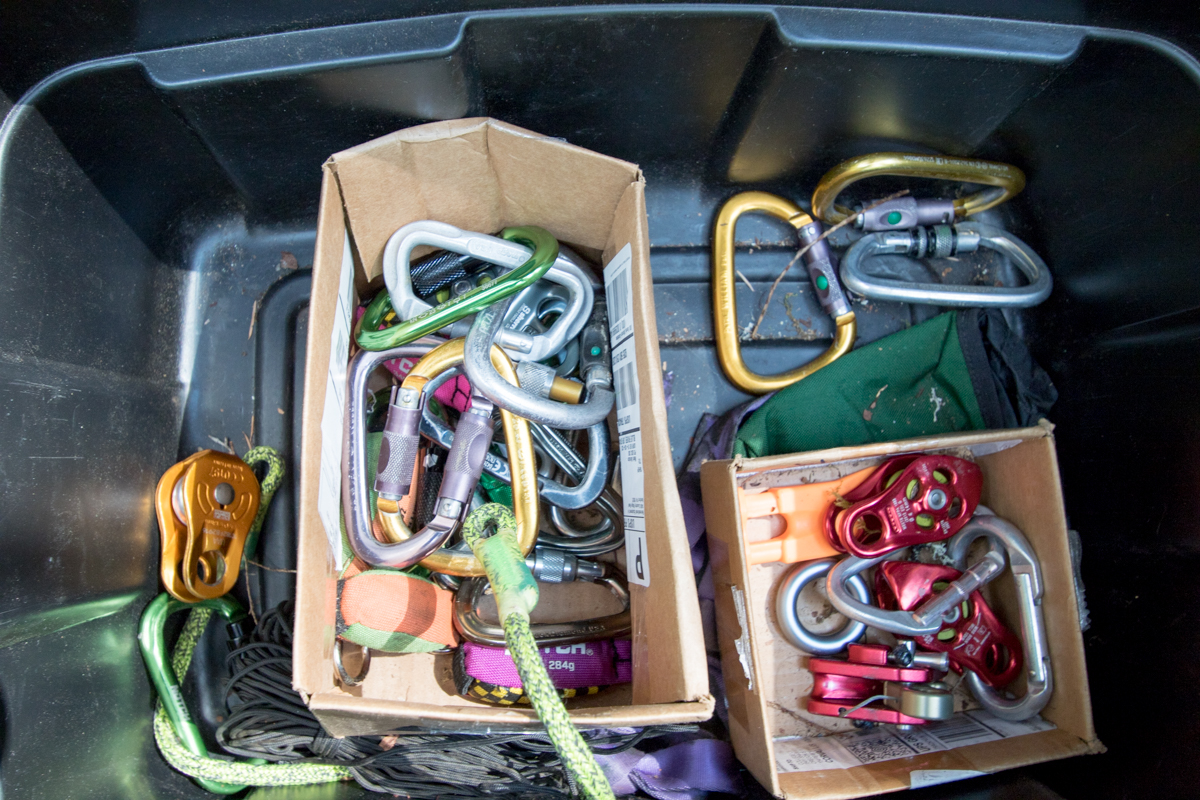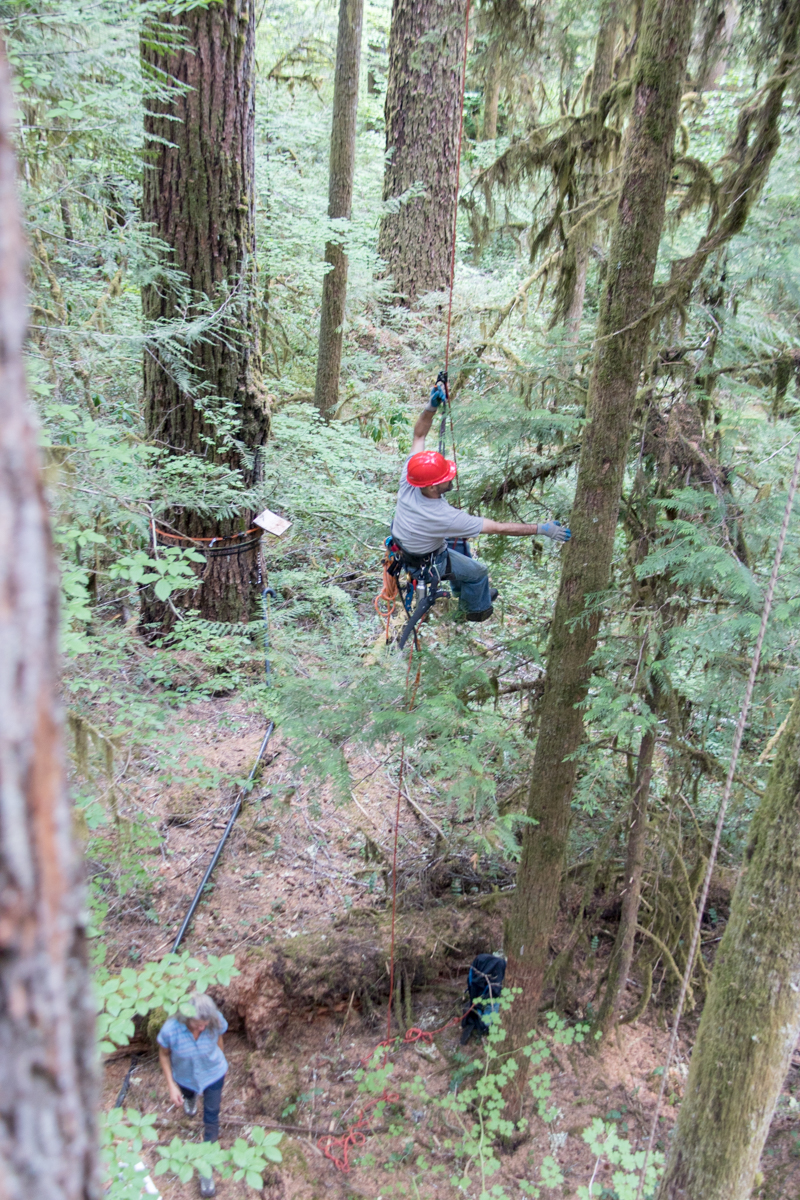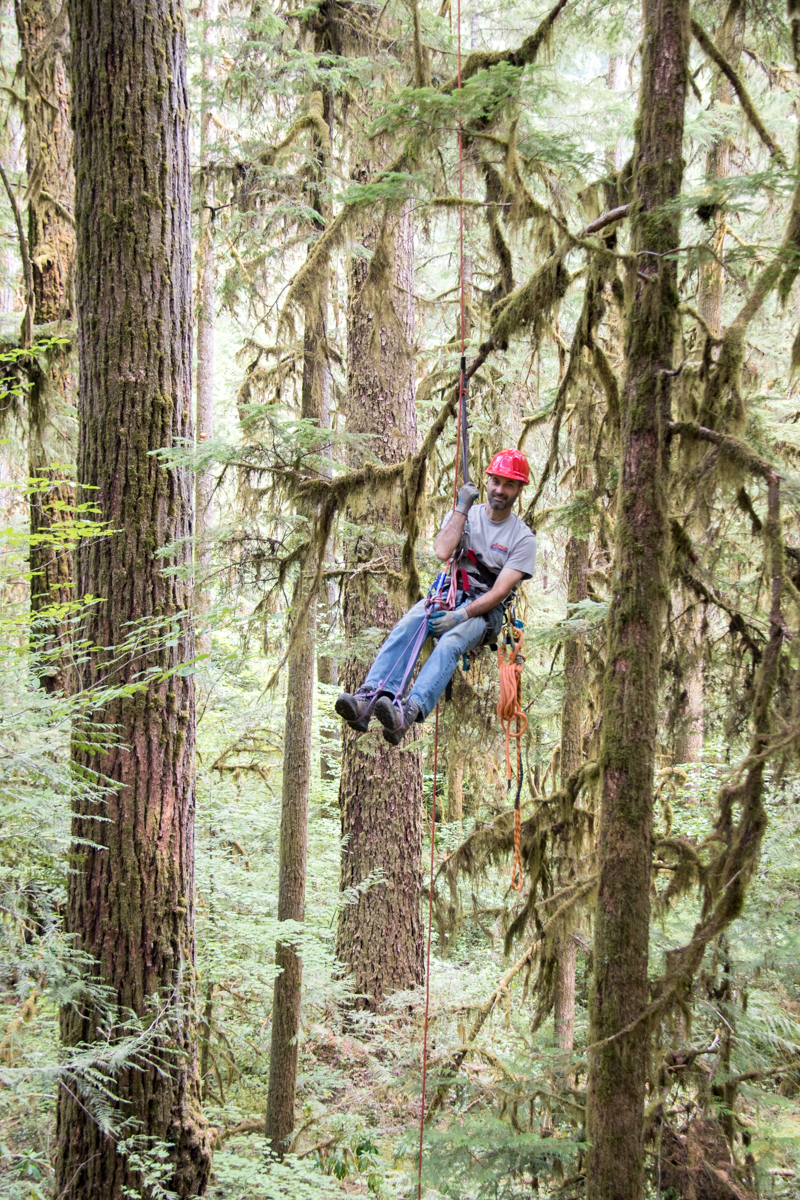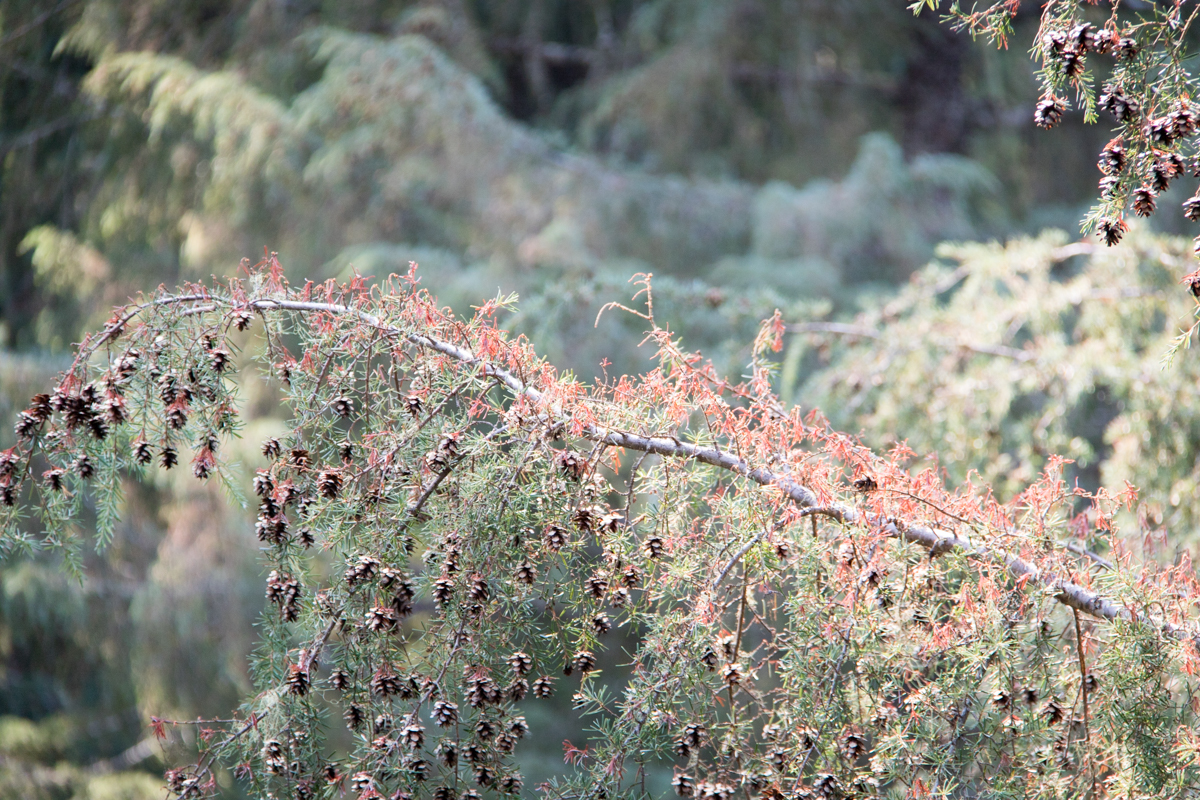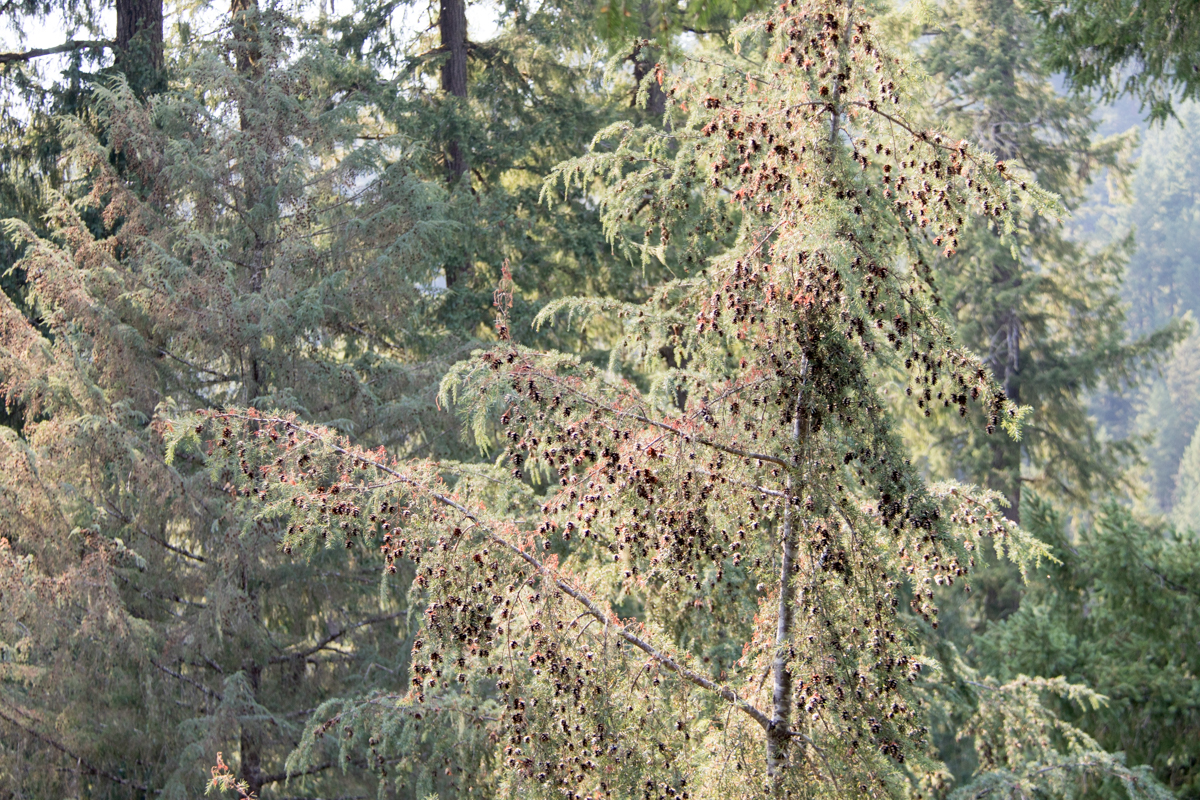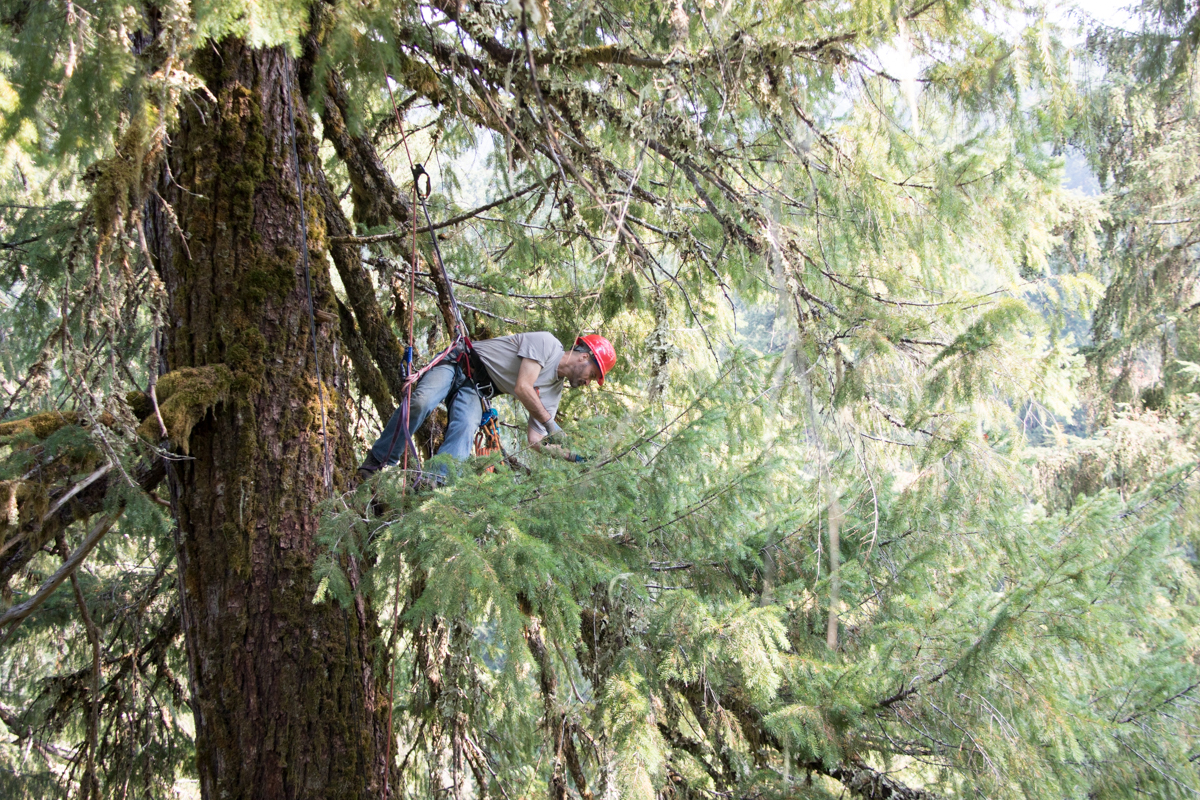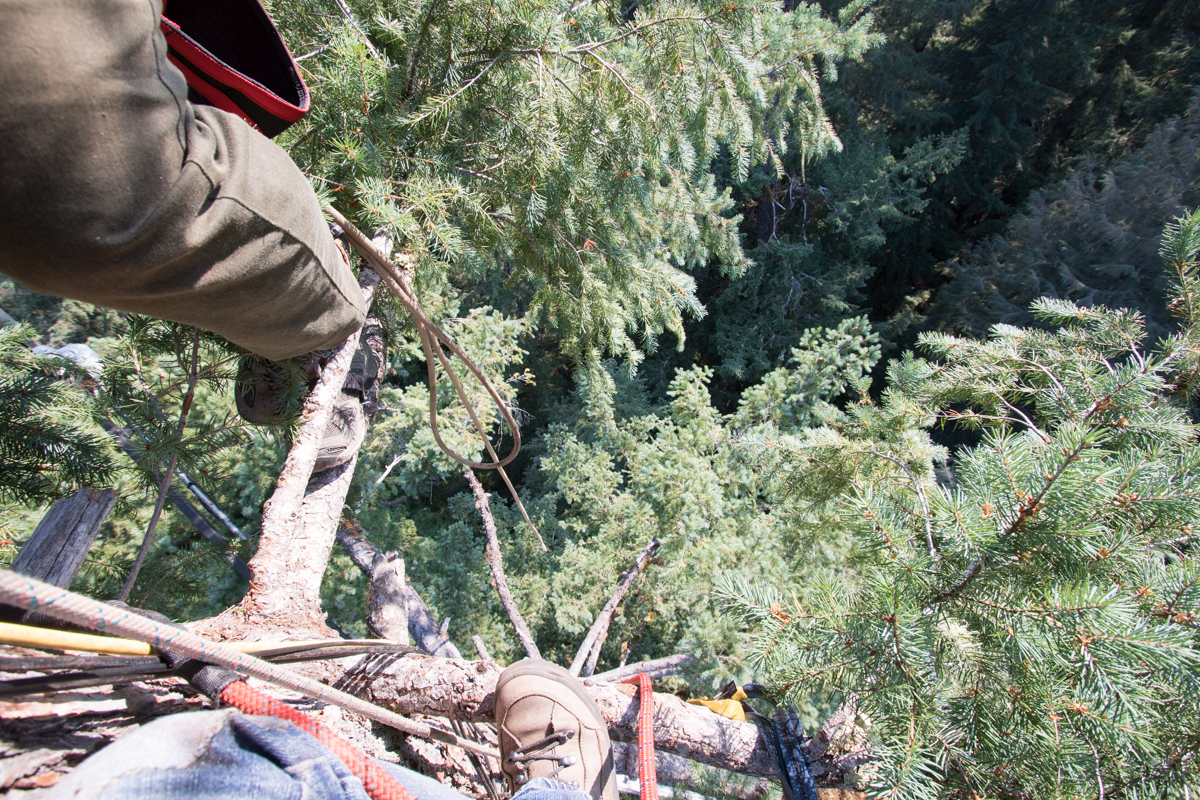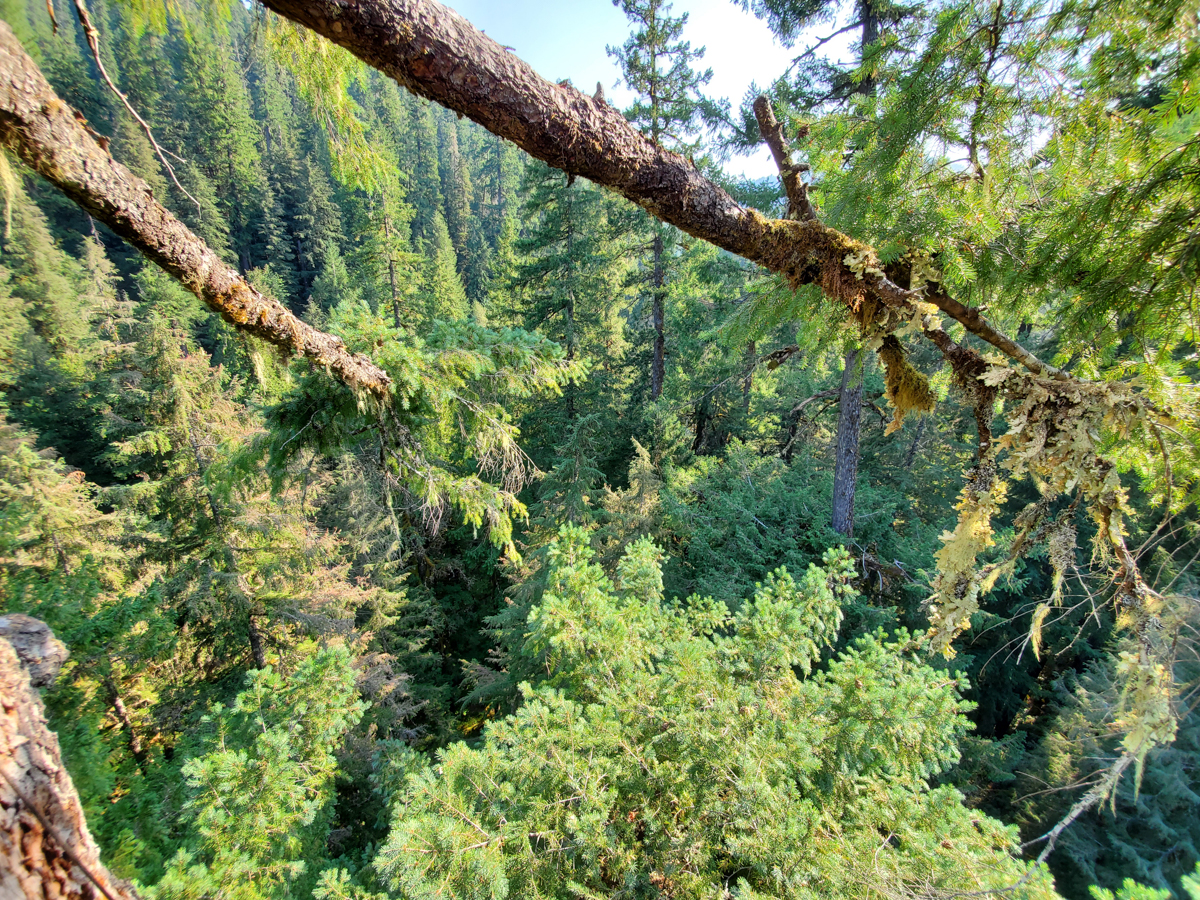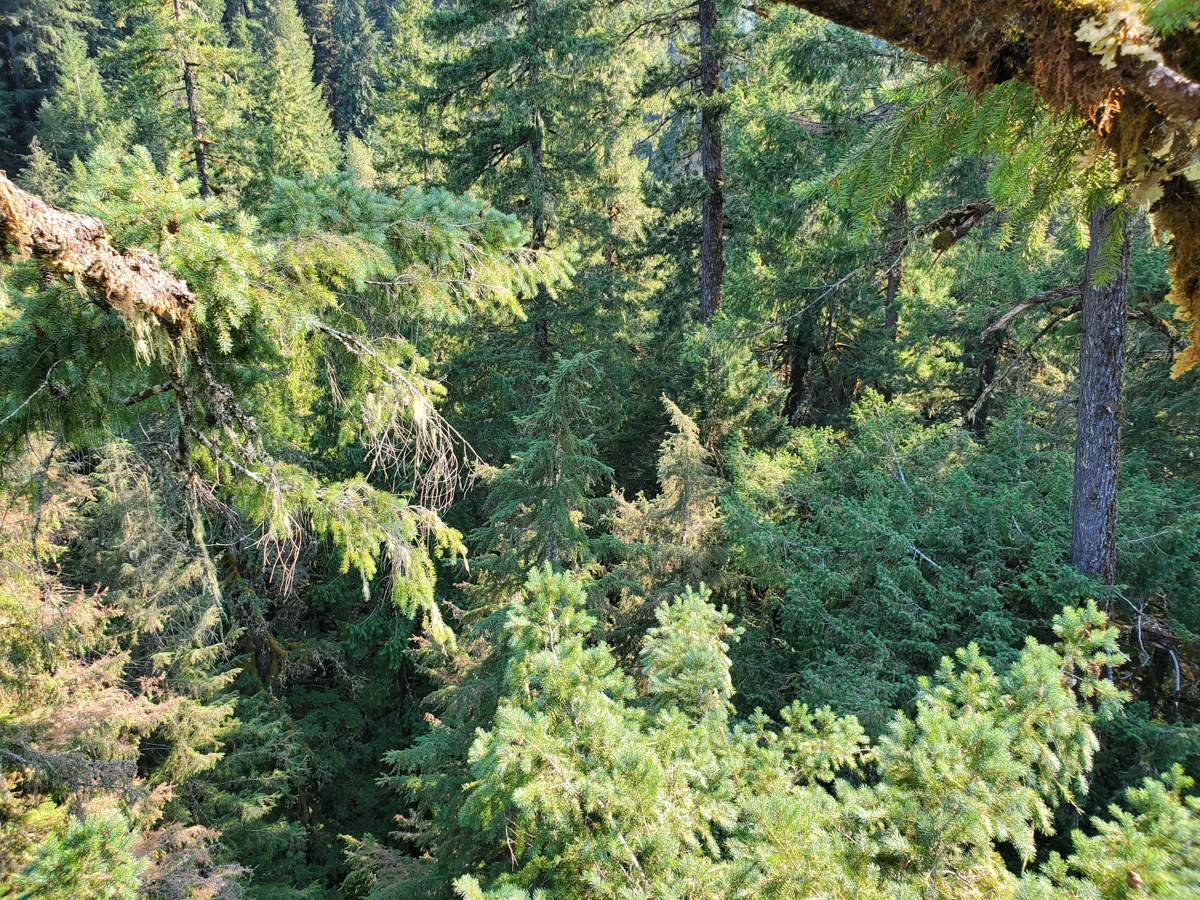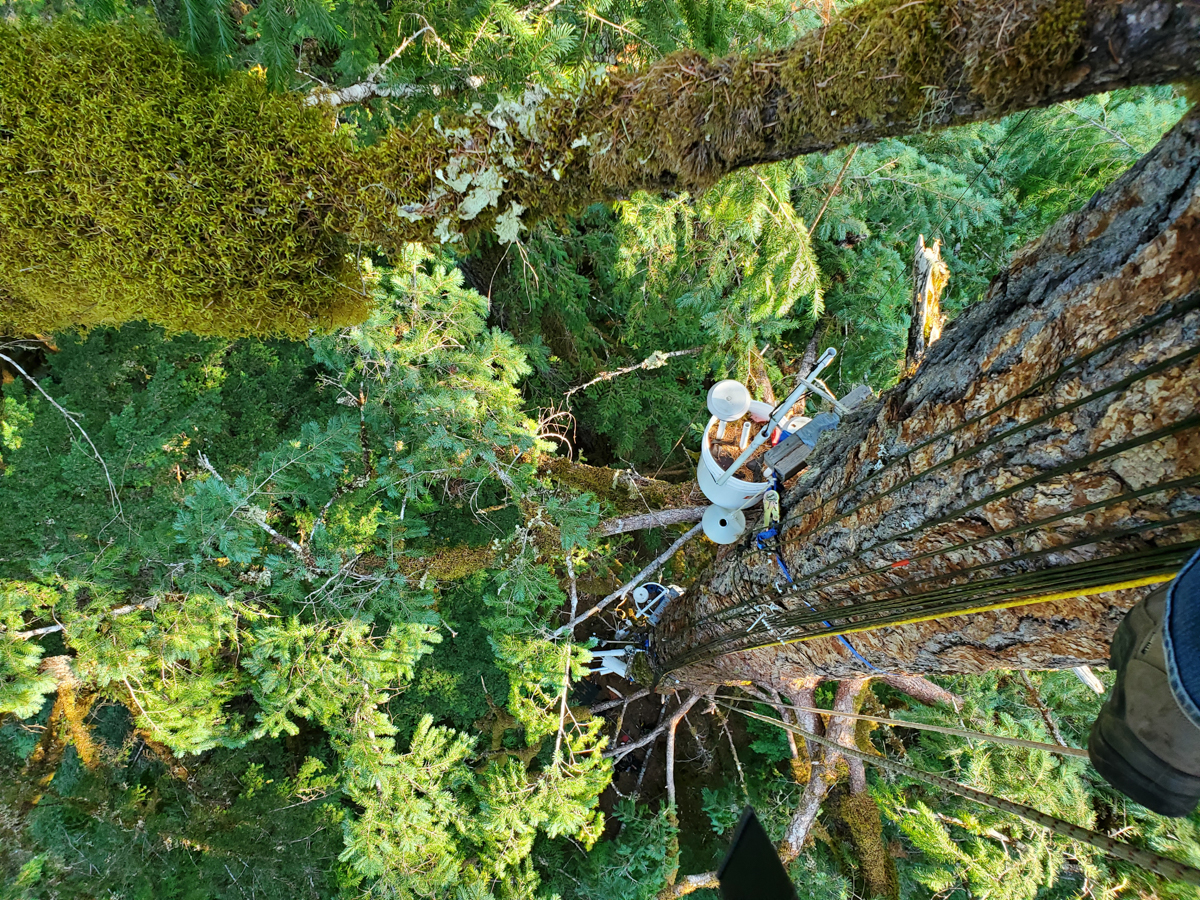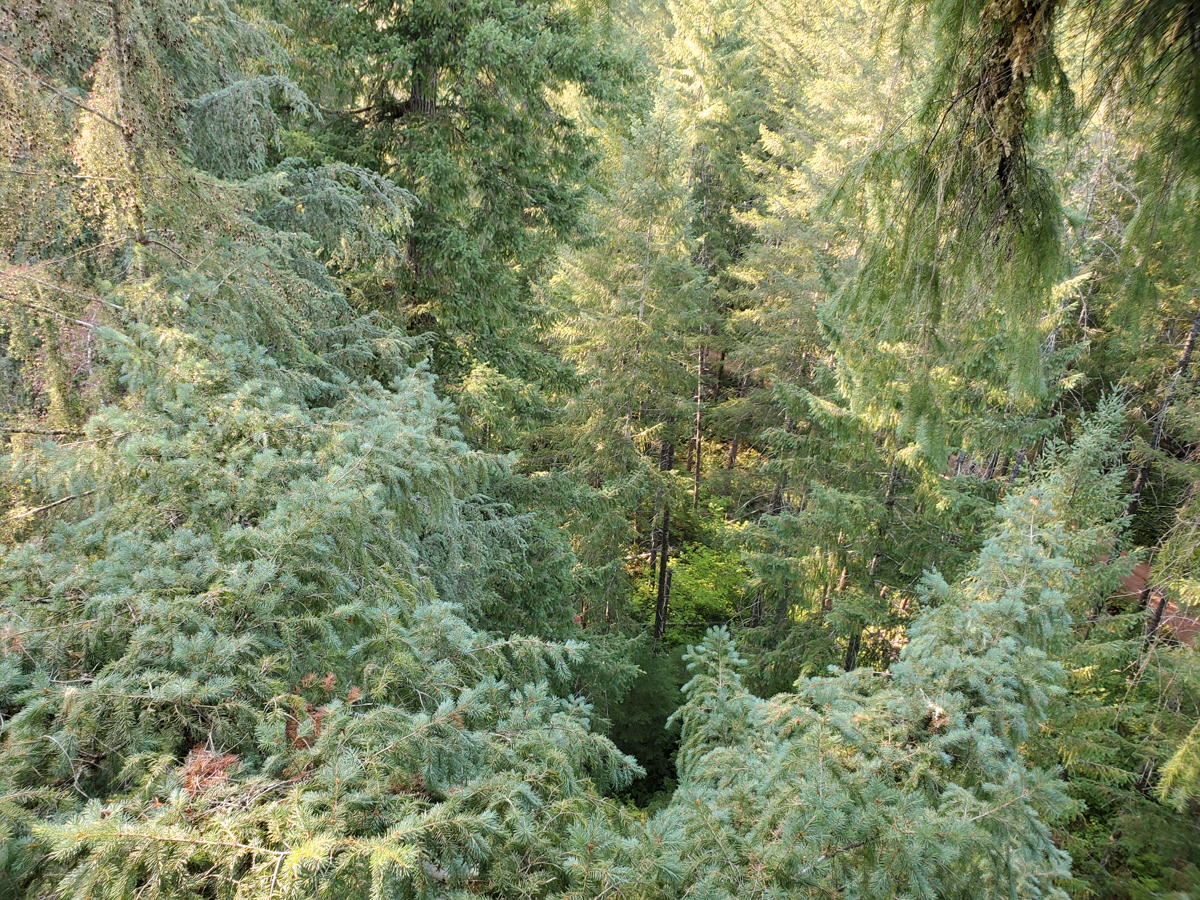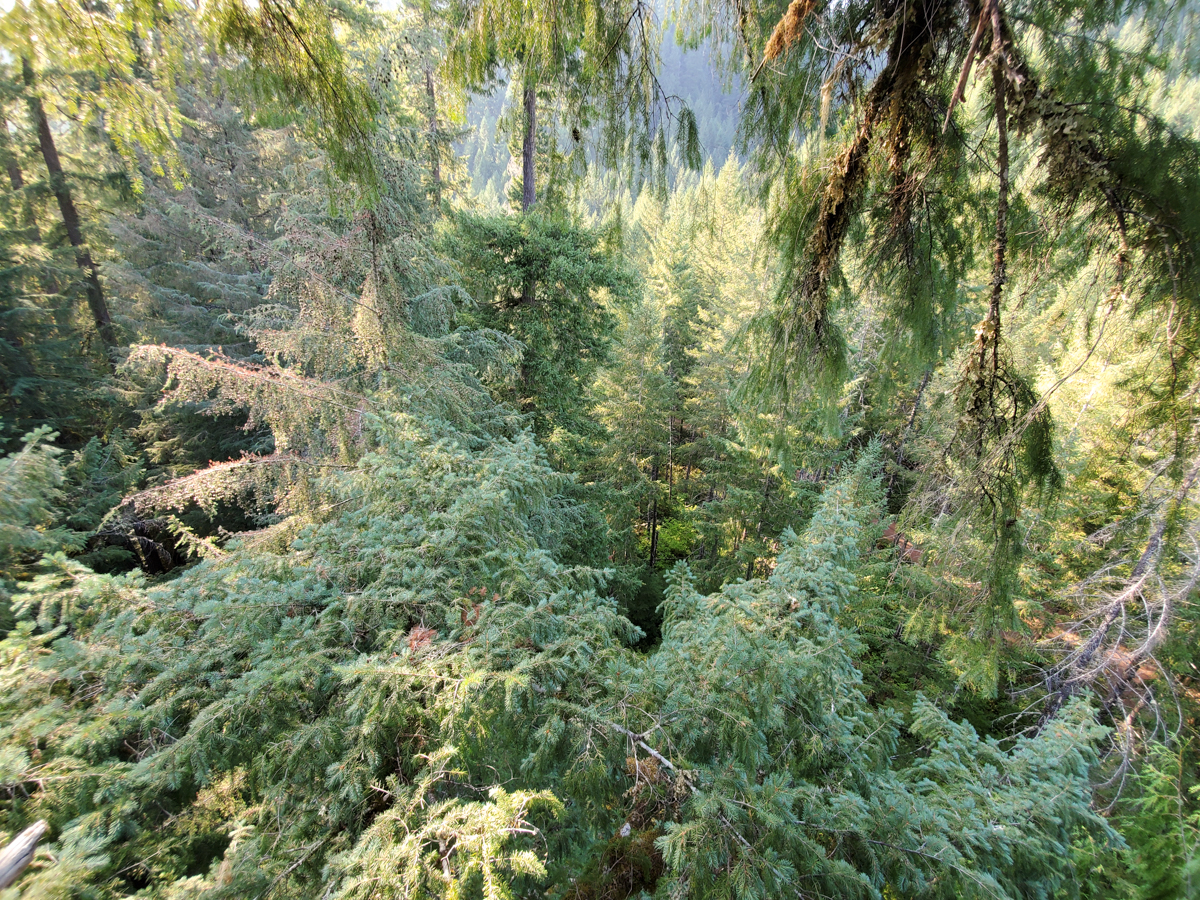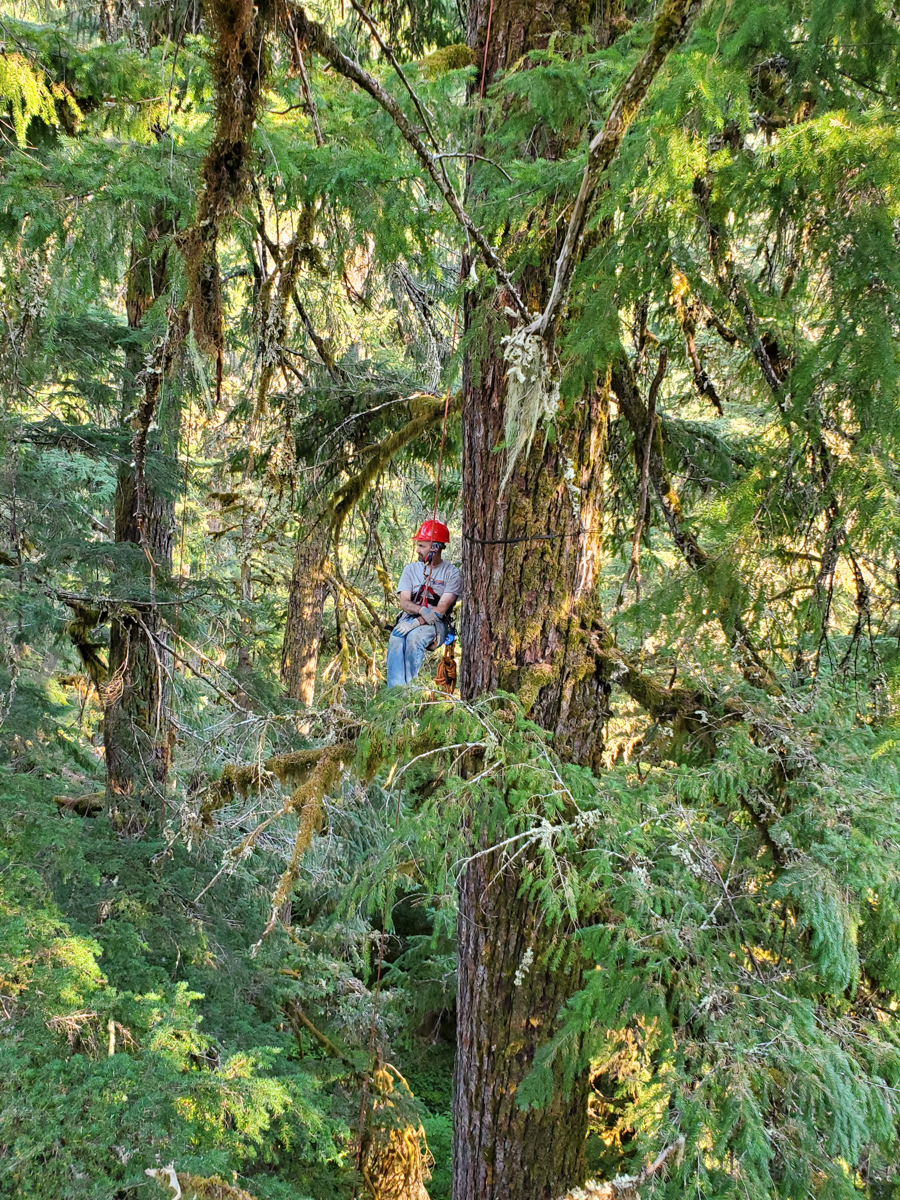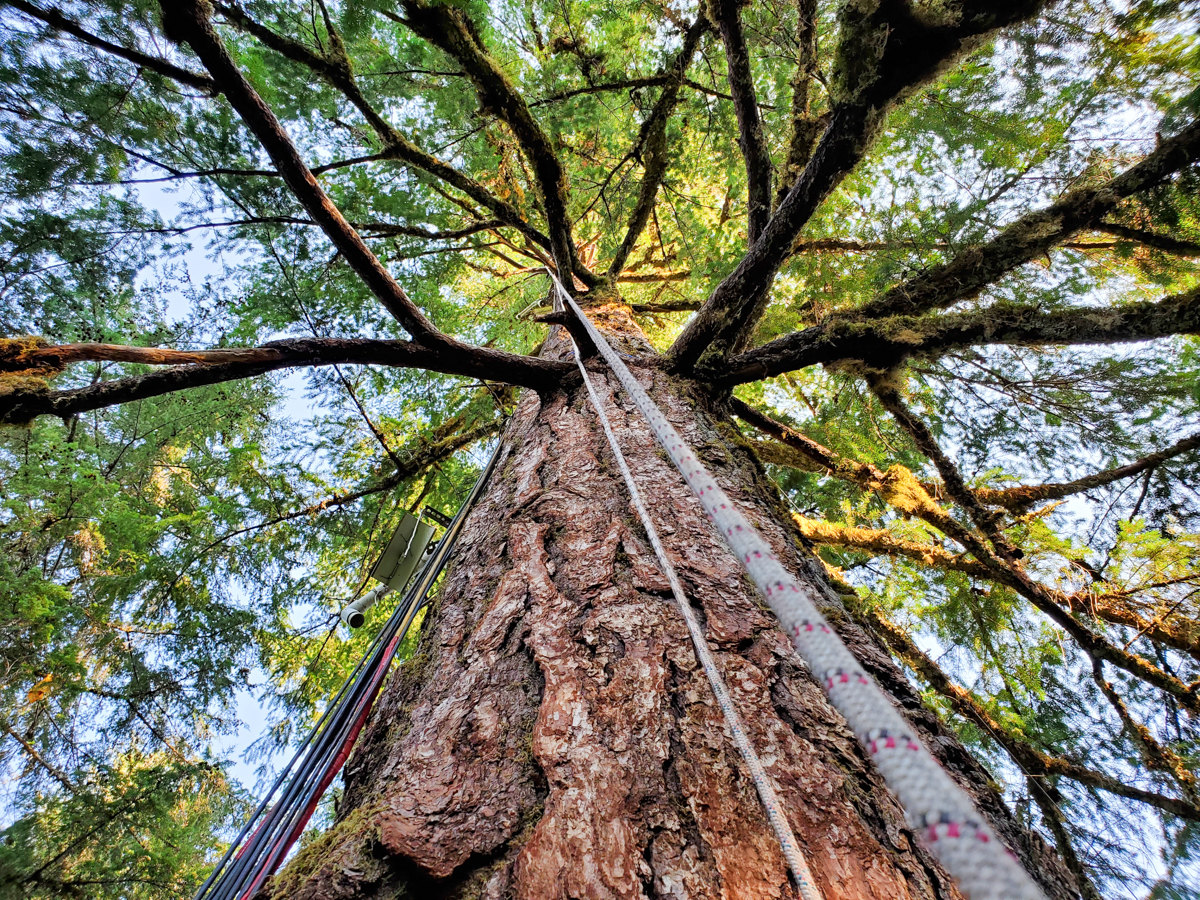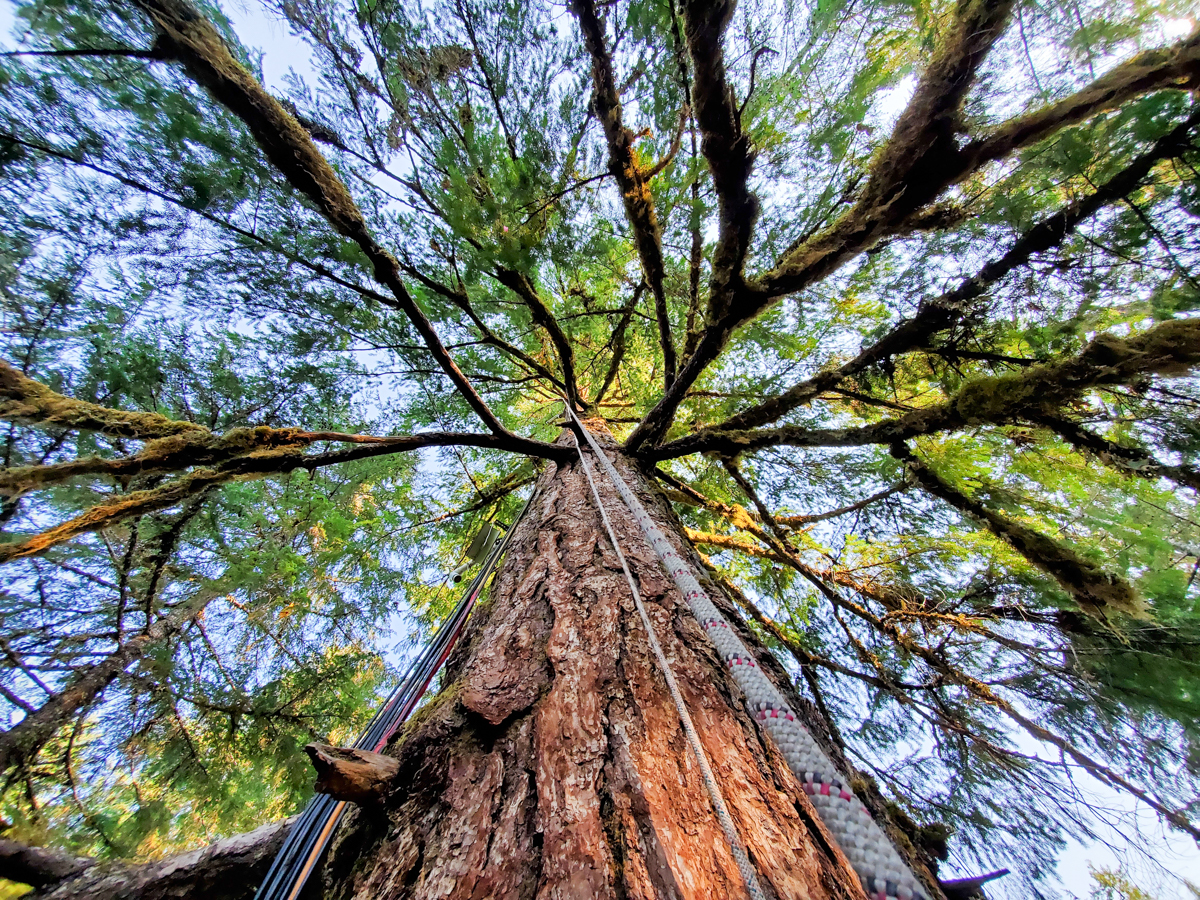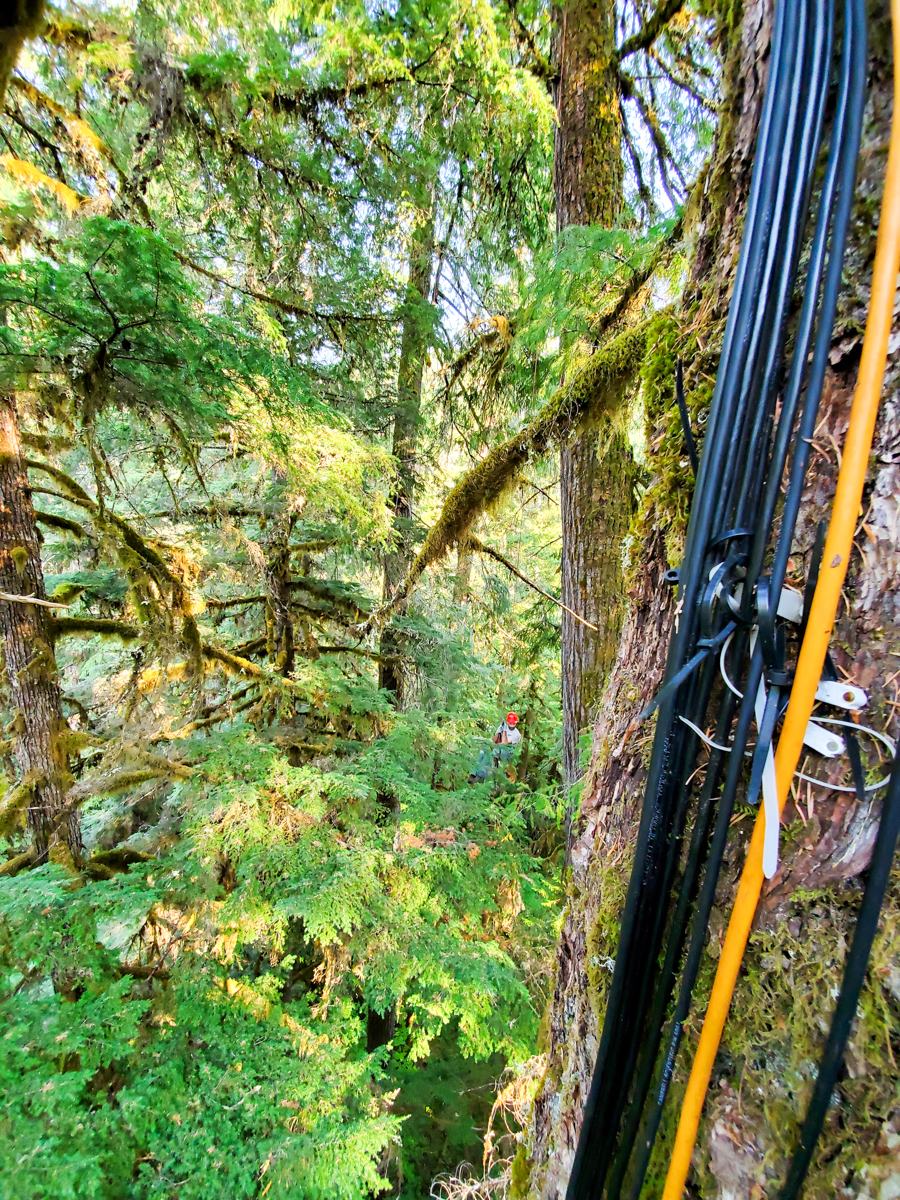Climbing rope, harnesses, lanyard, ascenders and carabiners are tools of the trade for a canopy ecologist whose field work is up in the trees
Canopy Ecology Field Work 2021
Researchers with the Long-Term Ecological Research program at the HJ Andrews Experimental Forest use climbing gear to ascend more than 50 meters (160 ft) into the tree canopy to learn more about the forest and the microclimate of the canopy. The highly-instrumented "Discovery Tree" is fitted with sensors that measure air temperature, air humidity, and air movement. Little is known about the environment within the canopy of old-growth trees and forests because accessing the high canopy is so difficult. Researchers hope to learn more about how microclimate variation across the vertical gradient affects physiology and stress of trees and epiphytes in a changing climate. The canopy microclimate project is led by Chris Still (https://directory.forestry.oregonstate.edu/people/still-chris), a professor in the Forest Ecosystems and Society Department at Oregon State University, and Mark Schulze, the Andrews Forest Director (https://directory.forestry.oregonstate.edu/people/schulze-mark).
Instruments measure air temperature, air humidity, and air movement. The measurements on the ground are compared to measurements taken in the tree canopy.
A dendrometer band around a large Douglas-fir tree measures the daily and annual swell and contraction of the tree trunk.
A dendrometer band around a large Douglas-fir tree measures the daily and annual swell and contraction of the tree trunk.
Tree climbers use carabiners to climb and to attach their gear to their harnesses
Adam Sibley 56 meters above ground in the Discovery Tree. The white enclosure above his head contains the data logger that records and transmits data from sensors in the upper canopy.
Lookout Creek along the Discovery Trail
Mark Schulze, Andrews Forest Director, begins his ascent into the canopy to take measurements
The blue and white discs in this image contain spore collectors for measuring the diversity of fungal spores which make it to this height in the canopy. This setup is replicated at six canopy heights.
The orange needles on this western hemlock branch are scorched, caused by a heat dome in summer 2021 that brought maximum air temperatures above 110 o F for three consecutive days.
The orange needles on this western hemlock branch are scorched, caused by a heat dome in summer 2021 that brought maximum air temperatures above 110 o F for three consecutive days.
Mark Schulze clips samples of branches high in the canopy as part of a study on needle scorch caused by the heat dome of summer 2021
Adam Sibley, graduate student, at ease high in the canopy. Adam spend many days and hours in the canopy for his research on assessing tree canopy microclimate and the response of trees to environmental stress
Looking down from high in the canopy into the crowns of neighboring trees
Looking down from high in the canopy into the crowns of neighboring trees
Looking down from high in the canopy into the crowns of neighboring trees
The cables and instruments along the tree trunk measure microclimate from the bottom of the tree to the top. Researchers measure temperature, humidity, leaf wetness and wind speed and direction. Suspended buckets measure fungal spore diversity.
Looking down from high in the canopy into the crowns of neighboring trees
Looking down from high in the canopy into the crowns of neighboring trees
Mark Schulze, Andrews Forest Director, takes a few minutes in the mid canopy as he makes his way high into the tree tops to make measurements
Mark Schulze climbing a neighbor of the Discovery Tree
The cables and instruments along the tree trunk measure microclimate from the bottom of the tree to the top. Researchers measure temperature, humidity, leaf wetness and wind speed and direction.
The cables and instruments along the tree trunk measure microclimate from the bottom of the tree to the top. Researchers measure temperature, humidity, leaf wetness and wind speed and direction.

